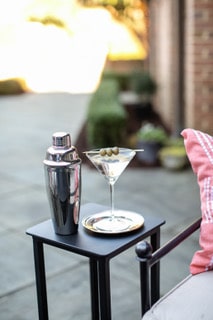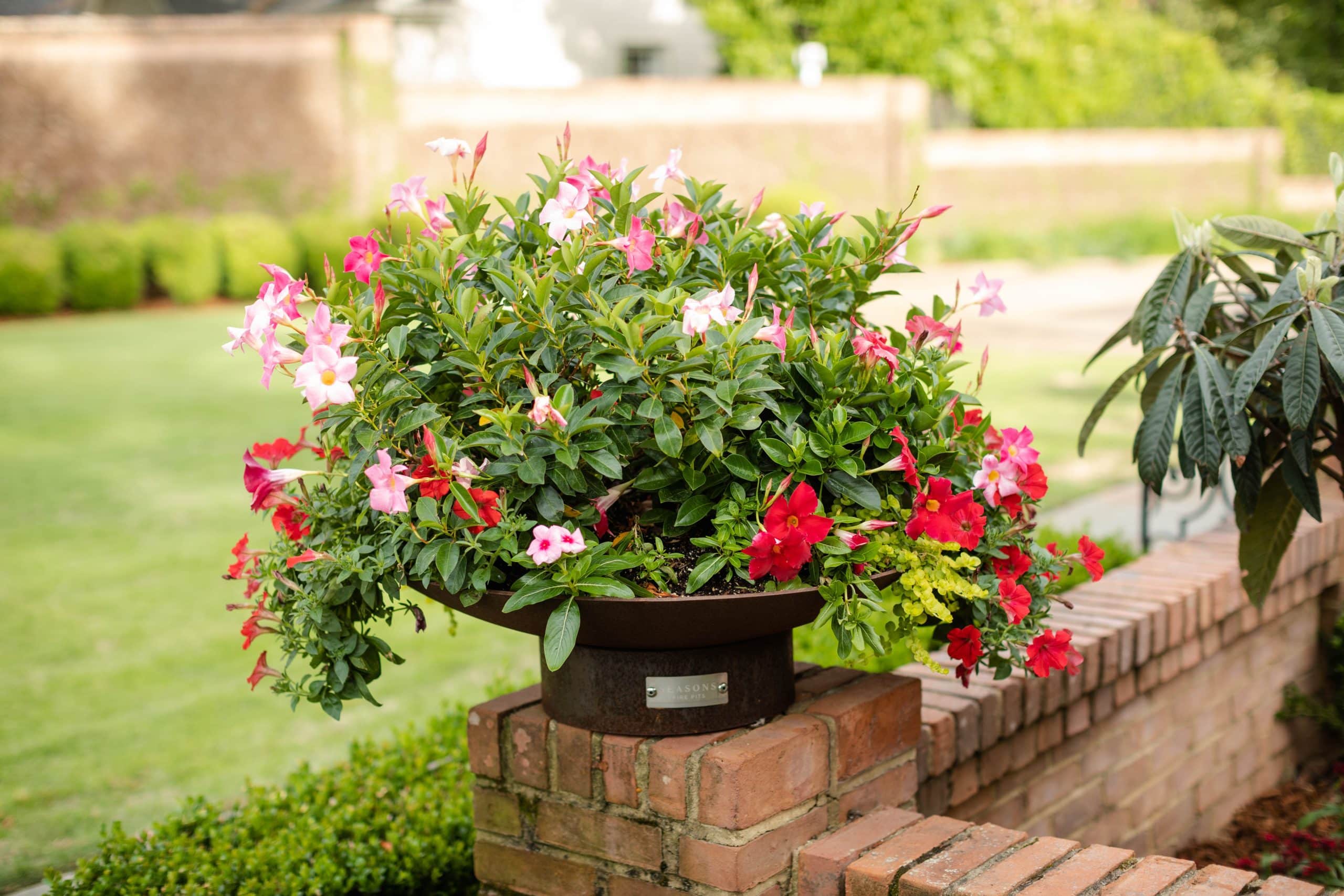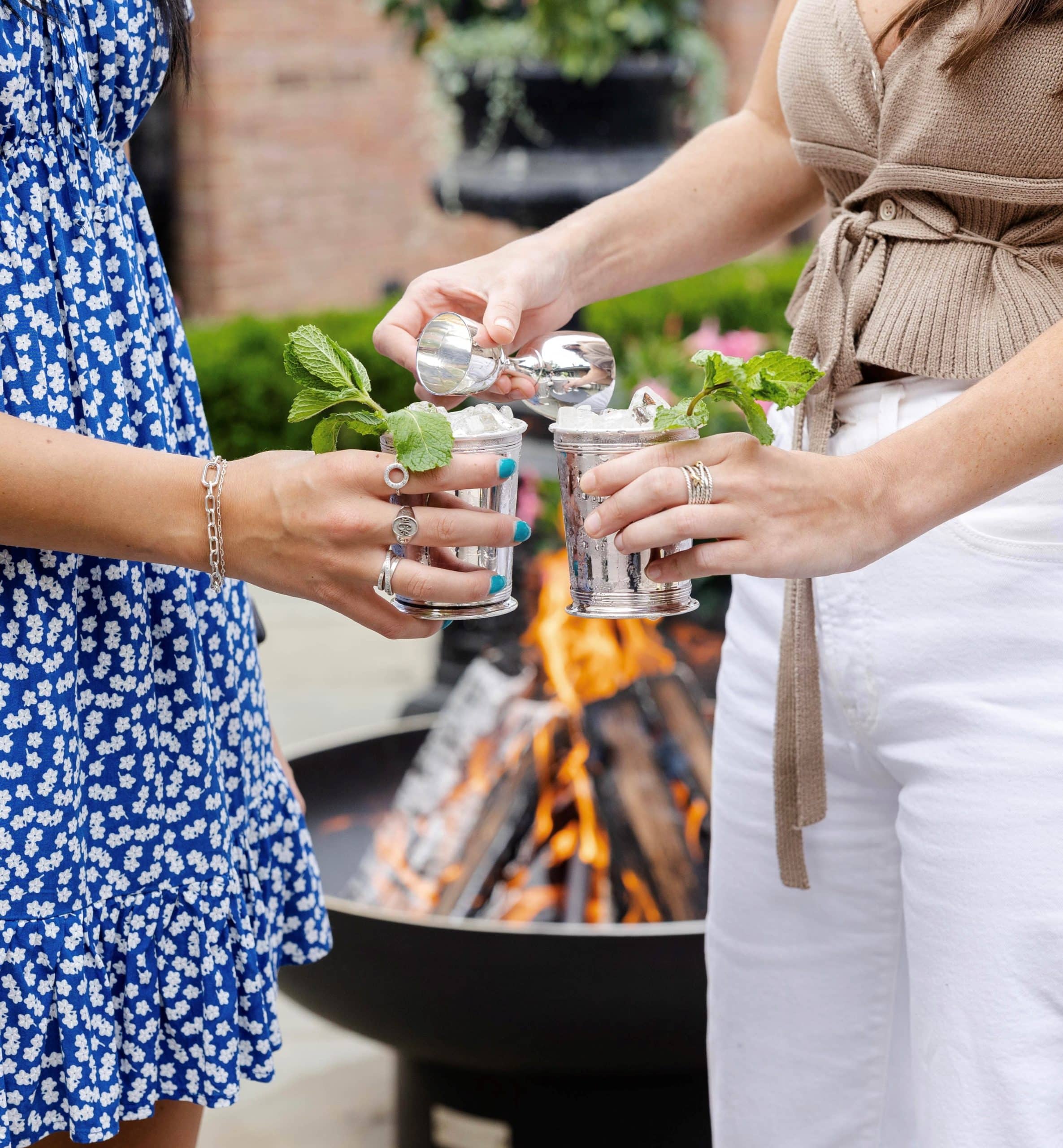Get ready to take your hot dog experience to the next level with this unique…

The Martini Table
We are well known for our fire pits, but did you know that Seasons Fire Pits also craft this handsome martini table? Designed to withstand the test of time, the hand forged martini table effortlessly accents any outdoor seating area. Its sleek lines and squared shape are perfect for alfresco entertaining and placing drinks within reach. Now that alfresco season has arrived, there’s no better time to explore one of our favorite cocktails- the martini.
Every element of the cocktail from the simple ingredients to the chilled coupe glass exudes panache. From James Bond’s widely known endorsement “shaken not stirred’ to Earnest Hemingway’s description, “I’ve never tasted anything so cool and clean…They make me feel civilized,” the martini remains one of the most well revered “up” drinks.
One of our favorite things about the martini is its endless versatility. Whether you prefer gin, vodka, or more, or less vermouth, the endless varieties can result in entirely different cocktails. To begin let’s discuss the classic recipes, the gin martini and the vodka martini.
Gin Martini
2 ounces gin
¾ ounce dry vermouth
Garnish: 1 lemon twist or olive
Vodka Martini
2 ½ ounces vodka
½ ounce dry vermouth
Garnish: 1 lemon twist or olive
Stir the ingredients over ice, then strain into a stemmed glass. Garnish with a lemon twist or olive. When vodka is the core, the amount of vermouth is decreased. Whereas gin has a strong botanical flavor that stands up to vermouth, vodka’s flavor profile can easily be overshadowed by the vermouth.
What exactly is vermouth? In the martini, gin or vodka’s collaborator is an aromatized wine, most commonly vermouth. An aromatized wine is simply a wine that has been flavored with herbs, citrus, or other botanicals, and fortified with additional alcohol. Most contain a sweetness either from the wine or from additional sugars. Furthermore, vermouths can be more sweet or less sweet (dry). The first vermouth was distilled in Italy and is now often referred to as Italian, or sweet, or red vermouth. These often have notes of sweet cherry flavors and an impression of vanilla. The French developed their own style of vermouth, stripping away the sweetness, resulting in a drier more bitter vermouth which is completely clear and colorless. Additionally, the amount of vermouth dictates how wet (sweet) or dry your martini is. Dry indicates less vermouth; wet more vermouth. Whatever your choice, it’s important to know that vermouth, just like wine, has a shelf life. It’s often recommended to buy vermouths in the smallest bottle possible.
As you can see, personal taste plays a huge role in your choice of martini. In addition to variations of the core ingredients, the martini is highly customizable. Additional ingredients could include honey syrup, orange marmalade, orange bitters, flavored liqueurs (apple, vanilla, chocolate, etc), Campari, and so on. And then there’s the garnish. The most popular garnishes include the twisted lemon (expressed over the drink and set on the edge of the glass) and the olive (adding olive brine is a “dirty” martini). Other options include a brandied cherry, an apple slice, strawberry slice, an orange twist, celery ribbon, small onion, and more. These varying combinations resulted in such notable drinks such as the Manhattan and Negroni among others. Infusions can create additional new flavors and the varieties are endless depending on your desired flavor profile.
The martini is always served chilled, and its stemmed glassware insures one’s hand doesn’t warm the glass. Many consider the martini a timeless work of art. We think it deserves a pedestal of equal style – the Seasons Fire Pits Martini Table.




This Post Has 0 Comments